
AI-powered delivery date estimates to boost conversion
Give shoppers peace of mind and protect and grow your bottom line
Personalized tracking experiences to build brand loyalty
Returns and exchanges management to mitigate fraud and reward best customers
Proactive communication to drive customer lifetime value
Delivery claim management to tackle fraud and build trust
Nightmare on Main Street: Anxious Online Shoppers Want a Happy Ending

New survey data reveals shoppers are scared. Here’s how to turn panic into peace of mind.
It’s a quiet fall evening. A consumer adds items to their cart.
Click.
Scroll.
Enter shipping info.
Then — a chill. A shadow. A tingling sense of uncertainty.
They’ve entered the post-purchase unknown — where delivery updates go dark, packages vanish, and porch pirates lurk around every corner.
We surveyed 3,461 U.S. consumers in our 2025 State of Post-Purchase Report, and found that retail isn’t therapy anymore. It’s a thriller.
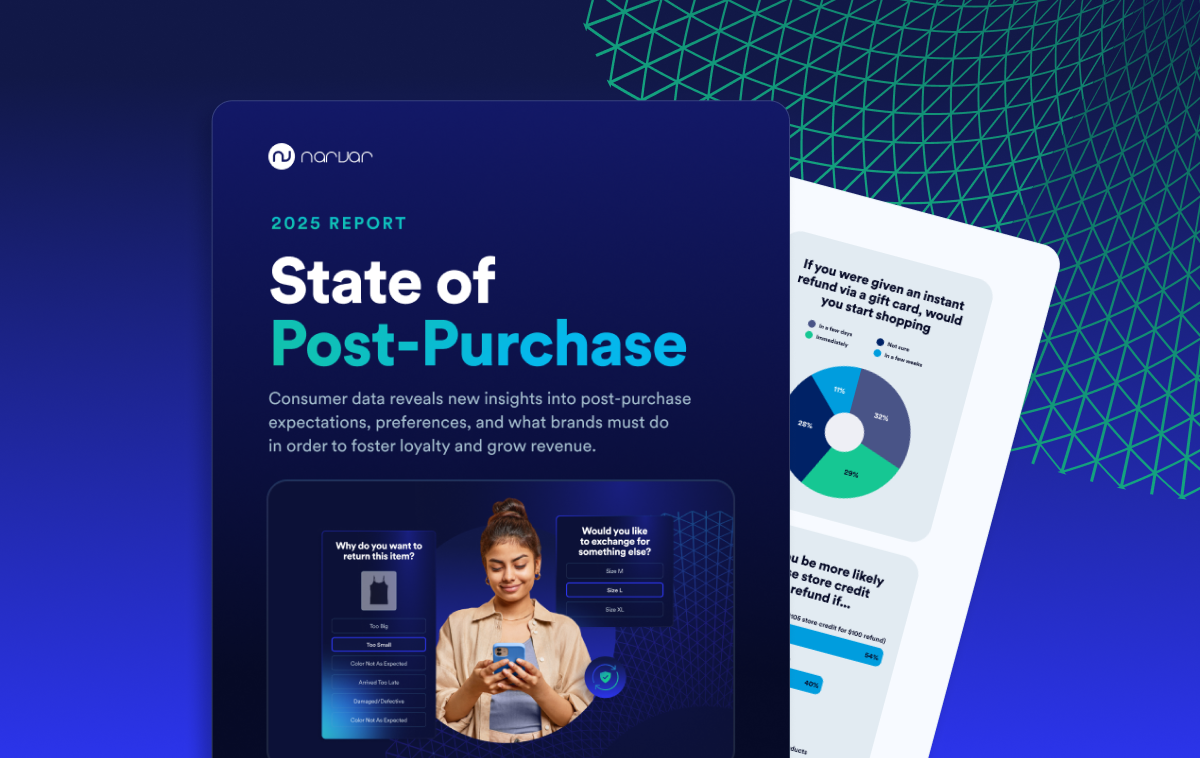
Get a Deep Dive into the State of Post-Purchase
66% of consumers feel anxious after buying online. This report shows how to convert concern into connection in order to drive long-term loyalty and revenue.
Download the 2025 State of Post-Purchase Report
The fear at checkout
We found that 66% of consumers feel anxious at least sometimes after placing an online order. And 34% report feeling anxious often or always, wondering: Where’s my package? Will it arrive on time? Will it arrive at all?

What was once a moment of excitement — retail therapy, anyone? — now feels like the opening scene of a suspense film. That’s because consumers know exactly what can go bump in the post-purchase night: delays, damage, missing items, porch pirates, and black holes of radio silence.
The result? The post-purchase experience has become the new battleground for consumer trust. And if brands aren’t actively easing that tension, they’re feeding it.
Shopper anxiety is part of a broader sense of unease. Consumer sentiment has dropped 24% year over year, with a 3% decline month over month. Further, 67% of U.S. adults report feeling very or somewhat anxious about current events, from inflation to geopolitical instability. When uncertainty is the backdrop, even routine purchases can feel fraught with risk.
The call is coming from inside the cart
But a very real part of post-purchase anxiety comes from the high risk of something going wrong after the order is placed. In fact, more than one-third of shoppers worry specifically about order issues, refunds, and late deliveries.
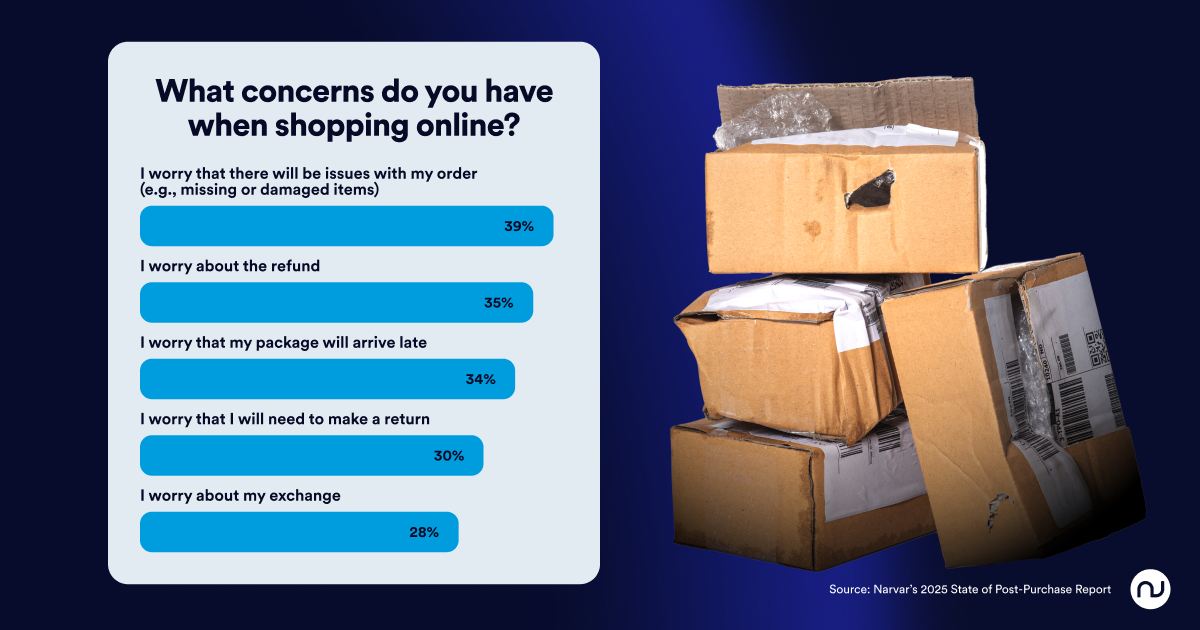
It’s not just global chaos. It’s the creeping doubt that something could go wrong at the most intrinsic touchpoints in the consumer experience. That tension — between expectation and reality — is where trust is either built or broken.
Be afraid. Be very afraid…of late deliveries.
Consumers count on retailers to keep their promises — especially when it comes to getting a package on time. But delays remain a persistent problem. And for many shoppers, every missed delivery window feels like the start of a sequel they didn’t ask for: The Waiting 2.
Unfortunately, late deliveries are now the norm, not the exception. We found that 74% of consumers experienced at least one late delivery in the past year. This aligns with on-time delivery rates declining for the Big 3 carriers. The 2024 holiday season, for example, saw year-over-year decreases across USPS (90% versus 97%), FedEx (92% versus 98%), and UPS (97% versus 99%).
Cue the jump scare: A late delivery doesn’t just frustrate. It fractures loyalty. For example, 73% say that in the past year an estimated delivery date (EDD) impacted whether or not they purchased an item. Half of consumers say they’re less likely to shop again with a retailer after a late delivery, and 6% say they cut ties for good.
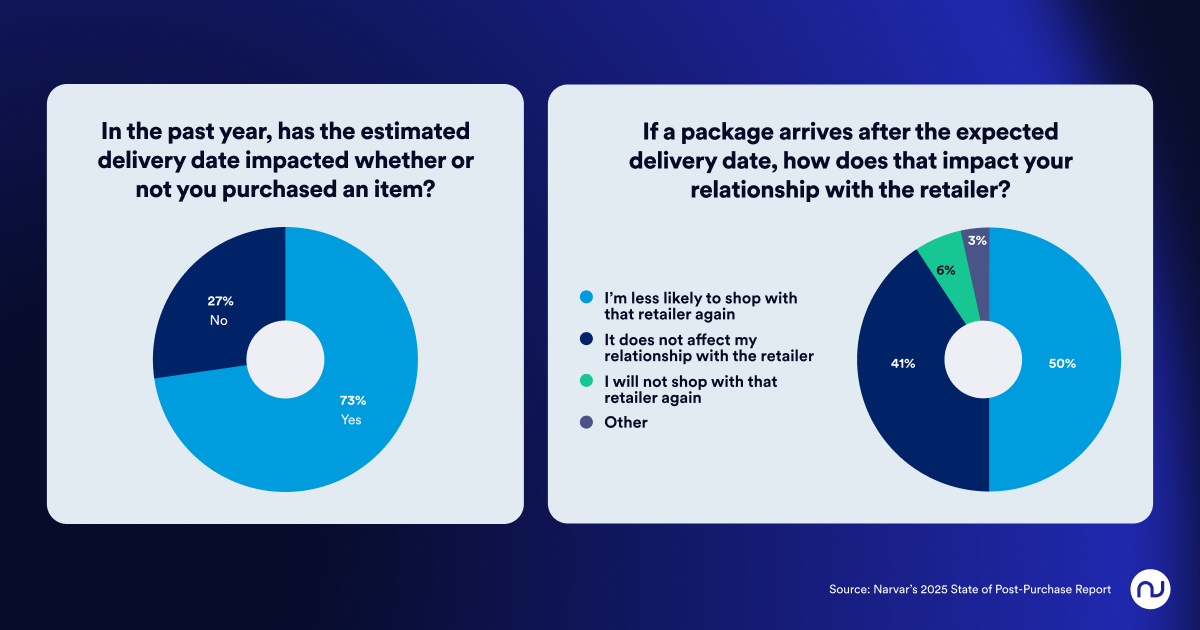
EDDs even play a critical role in first-time conversions. For many shoppers, seeing a clear timeline at checkout builds the confidence needed to complete the transaction. In our survey, 45% said they’re more likely to buy when an estimated delivery date is shown.
Attack of the Gen Z expectations
For consumers under 60, EDDs are a key part of the decision-making process: 79% of 18 – 29-year-olds, 80% of 30 – 44-year-olds, and 74% of 45 – 60-year-olds say they made a purchase based on an EDD in the past year. That drops to just 57% among those over 60.
A single late delivery might not seem too bad, but for Gen Z shoppers, that’s all it takes for them to say goodbye to a brand. Only 40% of 18 – 29-year-olds say they’d shop again with a retailer after a missed EDD.
45% of shoppers said they’re more likely to buy when an estimated delivery date is shown.
There’s only one way out: Get the date right
If inaccurate delivery dates are the jump scare no one asked for, then the fix is surprisingly simple: Tell consumers when their order will arrive — and mean it.
35% of shoppers say that accurate delivery estimates would ease their post-purchase anxiety. And when evaluating EDDs, accuracy actually matters more than cost — 57.4% of consumers prioritize getting a reliable date, while 56.6% prioritize cost.

That reliability doesn’t just bring peace of mind — it builds loyalty. More than half of consumers (55%) say that on-time delivery would make them more likely to purchase from a retailer again, making it the No. 1 incentive to drive repeat behavior.
And here’s the clearest sign that trust in delivery has become a form of currency: 37% of shoppers say they’d pay extra just to guarantee their package arrives on time.
Whatever you do, don’t fall…prey to delivery issues and porch piracy
It’s not just ghosts haunting consumers after checkout — it’s real threats like stolen packages, damaged goods, and orders that mysteriously disappear. What should be a moment of excitement turns into frustration, claims, and broken trust.
86% of consumers say they’ve experienced at least one delivery issue in their lifetime. And the damage adds up fast: In 2024 alone, 85 million packages arrived damaged in the U.S., racking up nearly $3 billion in costs for retailers.
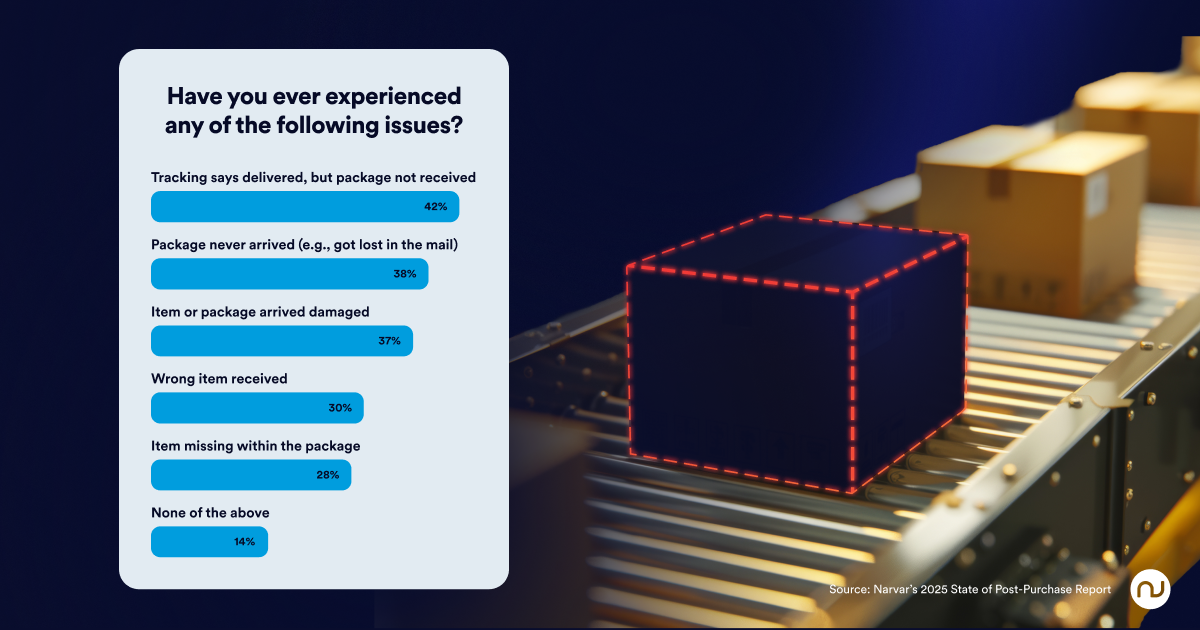
Our survey found that younger generations experienced more delivery issues, likely because they also do more of their shopping online than other age groups.

And 41% of consumers have had a package stolen before. In fact, more than 120 million packages were stolen in the U.S. in 2024 — a 34% year-over-year increase.
The threat of porch piracy and delivery issues isn’t just unnerving — it’s expensive. These fears are directly affecting how, when, and whether consumers shop online at all.
64% of shoppers say the risk of delivery issues sometimes or regularly stops them from placing an order. In fact, 39% are specifically worried about problems with their packages once they’re en route.
And 62% of consumers say the threat of stolen packages has kept them from checking out, with 40% admitting they skipped at least one online purchase in the past year because they were afraid their package would be snatched.
62% of consumers say the threat of stolen packages has kept them from checking out, with 40% admitting they skipped at least one online purchase in the past year because of these concerns.
When fear interrupts the path to purchase, it chips away at lifetime value, one unplaced order at a time.
The young and the anxious
A staggering 75% of 18 – 29-year-olds say the threat of porch piracy sometimes or regularly stops them from shopping online. This source of friction is strong enough to derail purchases.
Interestingly, while three in four feel anxious, just over half (52%) said they actually chose not to make an online purchase in the past year because of it. That might sound like a disconnect, but it’s not. It’s a clear signal that fear is actively reshaping behavior, even among digital natives.
If a brand can’t offer confidence at the doorstep, younger consumers are more than willing to walk away from the cart.
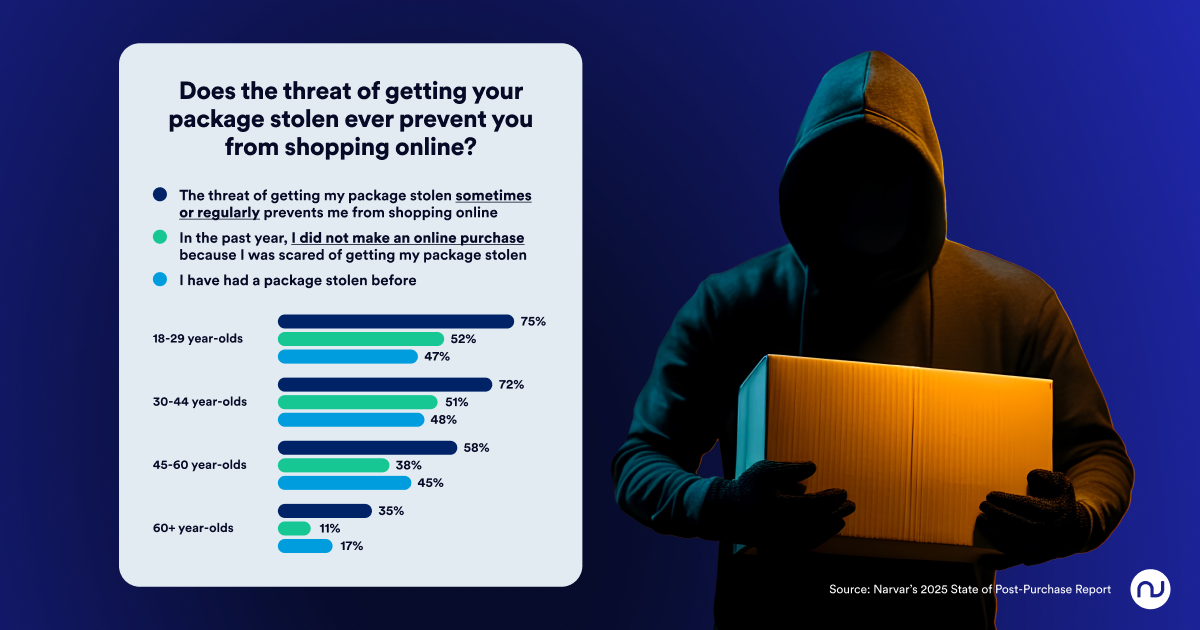
Survive the scare: Offer shipping insurance
For retailers battling delivery dread, there’s a powerful way to fight back: delivery protection.
More brands are embracing it as a tool to defuse anxiety around package theft, damage, and loss, replacing fear with confidence. And it’s working. In the past year, 37% of consumers have purchased insurance for an online order, signaling a shift toward greater protection expectations.
37% of consumers have purchased insurance for an online order in the past year.
It’s not just about peace of mind. It's also a revenue opportunity. Of those willing to pay for coverage, 26% say they’d spend $5, and 31% would pay more than $7. With the average ecommerce order value at $163, many retailers can charge 3–4% of AOV to land in that $5–$7 range — creating a high-margin upsell that also builds trust.
From horror story to happy ending
Today’s shoppers are entering every purchase with caution — haunted by past experiences of late deliveries, stolen packages, and missing items. The data is clear: Anxiety is shaping behavior, killing conversion, and putting long-term loyalty at risk.
But brands don’t have to watch this retail horror story. By investing in accurate delivery estimates and protection at checkout, retailers can turn fear into trust. Because when customers feel seen, supported, and in control, the post-purchase experience becomes less of a jump scare, and more of a jump for joy.

Take your post-purchase experience from scary to strategic.
Book a demo and see how Narvar turns anxiety into opportunity — and converts trust into long-term growth.




















